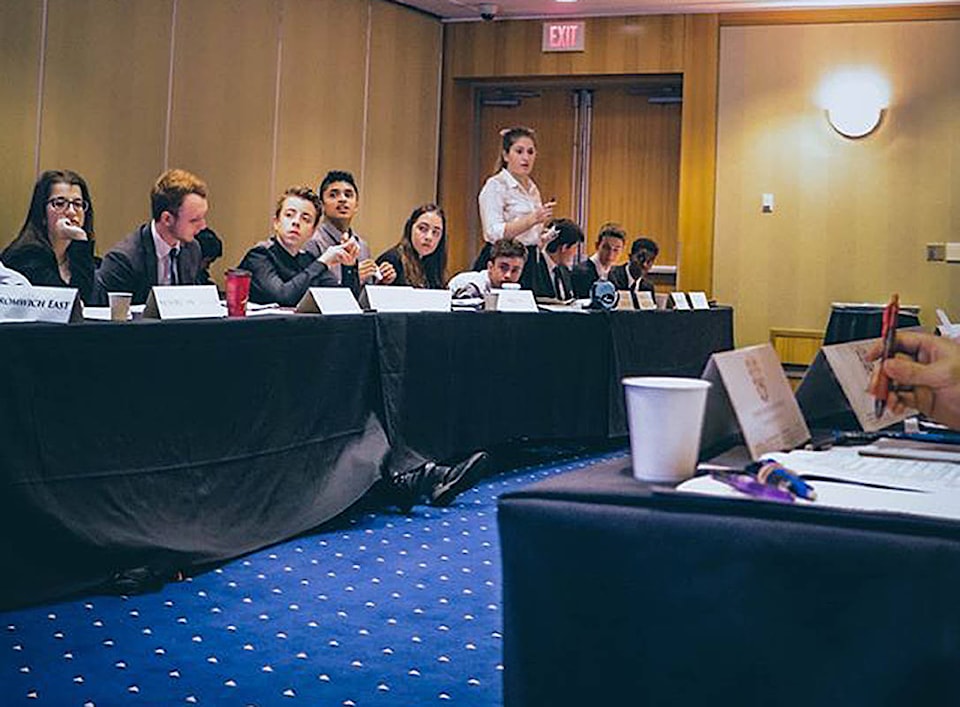Shortly after the Second World war, 50 nations, including Canada, gathered together to draw up a charter that would eventually change the world.
These nations worked together to create an organization, the mission for which would, according to C. David Welsh, be: “to maintain international peace and security; to foster cooperation in solving international economic, social, cultural, and humanitarian problems; to promote respect for human rights and fundamental freedoms; to develop friendly relations among nations; and to be a center for harmonizing the actions of nations in attaining common goals.”
Thus, in San Francisco, on Jan. 1, 1945, the United Nations was born.
Fast-forward 72 years, to April, 2017. Young people from all over the globe gathered at the Canadian High School Model United Nations at the Wall Centre in Vancouver, B.C. CAHSMUN 2017 was underway.
At Model UN conferences throughout the world, students from grades 6 to 12 (though some conferences are specifically for university students) are assigned to committees. The youth delegates run simulations – representing groups such as the World Health Organisation, the UN Security Council, and even non-UN groups such as OPEC, NATO, NGOs, the House of Commons, or ASEAN.
In committees, students are assigned to be representatives of countries or specific organizations. The students are expected to come prepared. They follow the same procedures as the organizations that they model, and each model conference has different topics. Most have to do with current events– such as the militarization of the Arctic, sustainable economic development, or the threat of overpopulation.
Conferences are usually held at hotels, and in April, along with a number of other student delegates from Thomas Haney secondary, I was fortunate to attend the CAHSMUN conference at the Sheraton Wall Centre.
The keynote speaker was passionate and compelling as she shared her friend’s experiences during the Rwandan genocide. It was a sobering beginning to the event.
Over the course of the next three days, I represented Belfast North in the United Kingdom’s House of Commons. My fellow committee members and I debated and passed a bill outlining the terms for Brexit. We simulated the same process the UK House of Commons follows in real life.
We created blocs to pass articles of the bill. People crossed the floor. We created new parties. We learned to network and to compromise so that we could get the important articles passed.
Though we were supposed to have a Conservative party majority, we ended up with a minority at the conference. Ironically, we were in a situation similar to that currently playing out in provincial politics.
I was the only representative from my party, and along with other small parties, such as the Scottish National Party, we changed the balance of power. We worked between the Labour Party and the Conservatives, making peace and bridging the political divide.
None of us could pass legislation without cooperation and the support of other parties.
When we were finished, we hadn’t only created a bill, we had forged alliances.
Anyone can sign up for Model UN, as part of a school delegation or as an independent delegate, and I would highly recommend doing so.
Seventy-two years after the first member nations of the UN gathered after the end of the war, teenagers are following in their footsteps.
Marlowe Evans is a senior student at Thomas Haney secondary and a member of the school’s student council.
